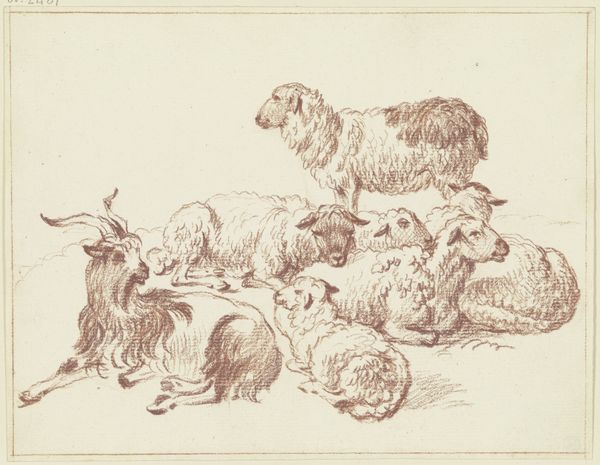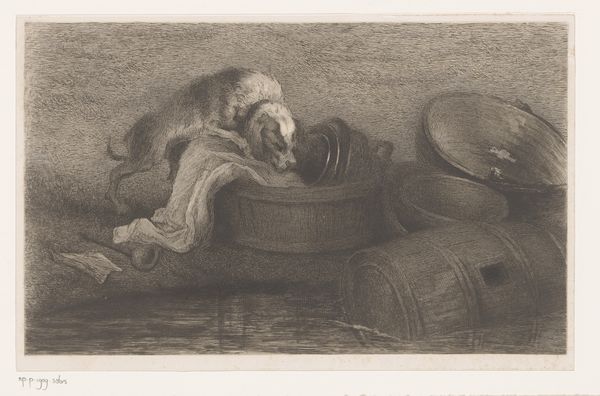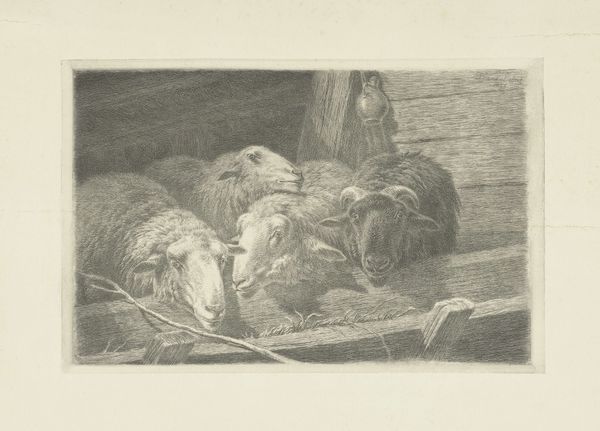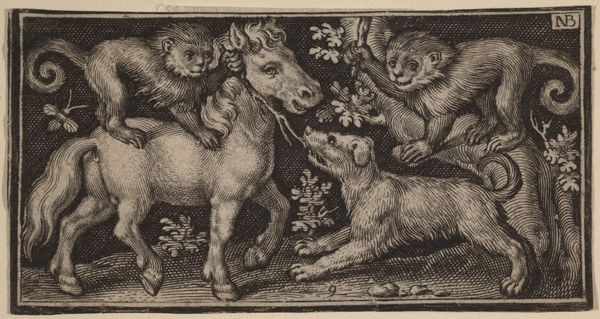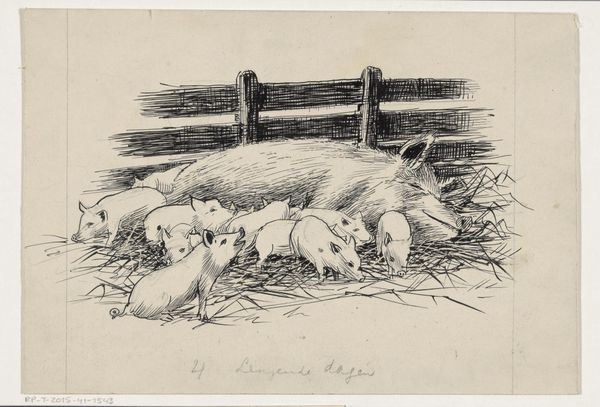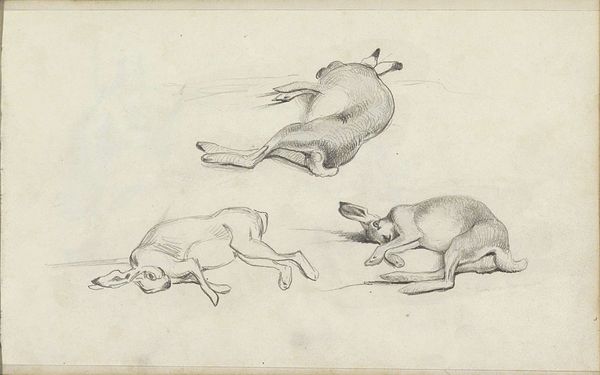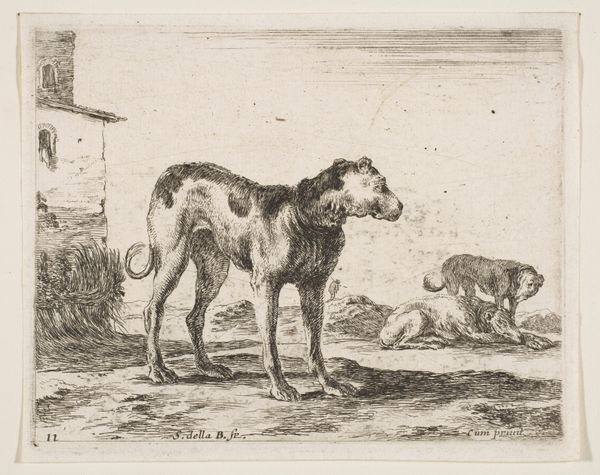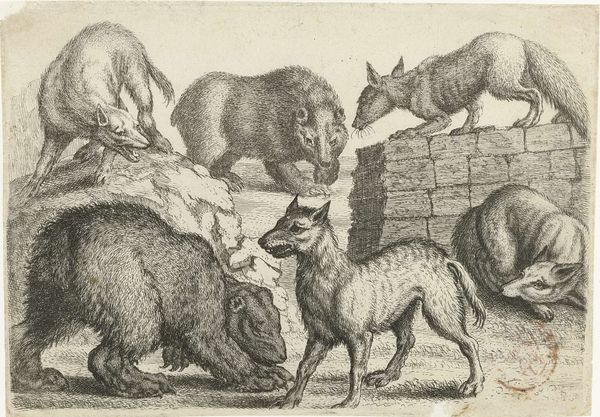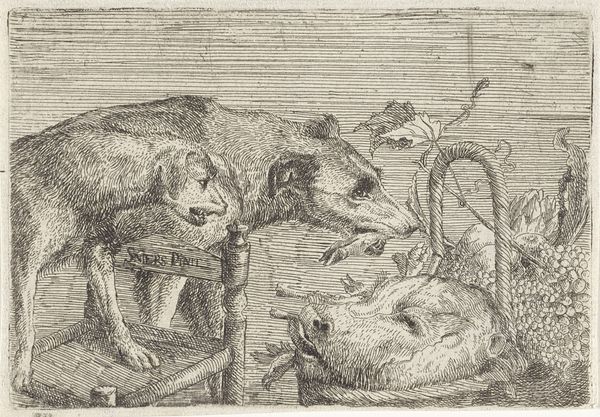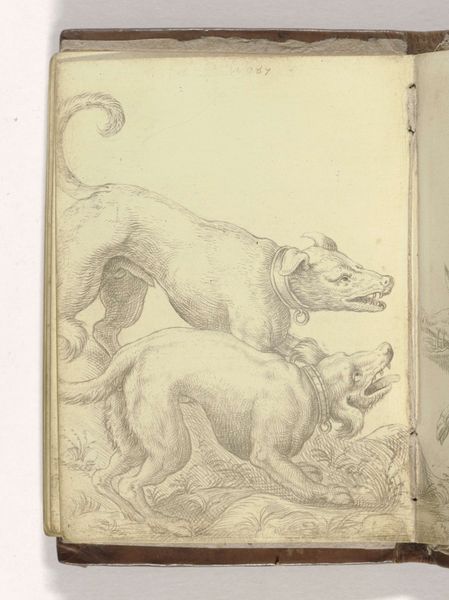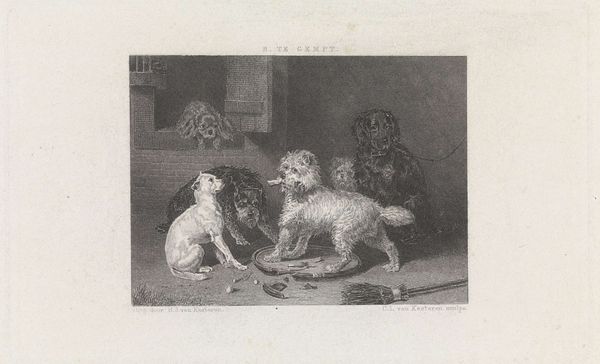
drawing, paper, charcoal
#
portrait
#
drawing
#
charcoal drawing
#
paper
#
coloured pencil
#
charcoal
Dimensions: height 155 mm, width 195 mm
Copyright: Rijks Museum: Open Domain
Curator: Here we have "Honden," a drawing by Jan Brandes, likely created between 1770 and 1808. It's rendered in charcoal and colored pencil on paper. Editor: What strikes me immediately is the intimacy, a group of puppies huddled together. The linework is quite delicate; you can almost feel the texture of their fur. And what is that tub in the back? Curator: Indeed. Brandes was quite prolific, documenting his surroundings. One can imagine these animals as being perhaps part of the landscape, but it may speak more to ideas about domestication, ownership and a shifting relationship with animals, at the time. Editor: The application of charcoal seems very deliberate. There are distinct hatch marks across the puppies, indicating dimension. One can almost envision Brandes’ process of observing, layering charcoal, and carefully rendering detail to capture their form. And note how he creates depth. The use of line here isn't simply descriptive, it's structurally building the composition, giving each pup its own weight, its own substance. What's the socio-historical reading you see here? Curator: The image points toward Enlightenment-era sensibilities of naturalism and scientific observation. The precision employed mirrors the era’s investment in cataloging the world, the rise of scientific academies, for example. Think about encyclopedias and detailed journals that served not just to capture images but to categorize, to impose rational order. Editor: So, this detailed depiction speaks to a societal desire for knowledge and organization... but it also displays emotion! To create that level of depth—one can clearly read the care, or even affection, Brandes had. Curator: Precisely. The image provides glimpses of the era’s shifting societal structures. Who might have commissioned, acquired or possessed a drawing such as this? The labor of making, displaying, viewing these images…all are indicative of 18th-century systems. Editor: In a way, this image functions on multiple levels: documenting form, revealing an era’s priorities, but also… speaking to very universal, human elements. Looking closely reveals its own intricate story of labor, vision, and also affection. Curator: Agreed. "Honden" becomes a prism through which we might consider the intertwined relationships of material and imagination during a pivotal epoch of social transformation.
Comments
No comments
Be the first to comment and join the conversation on the ultimate creative platform.
